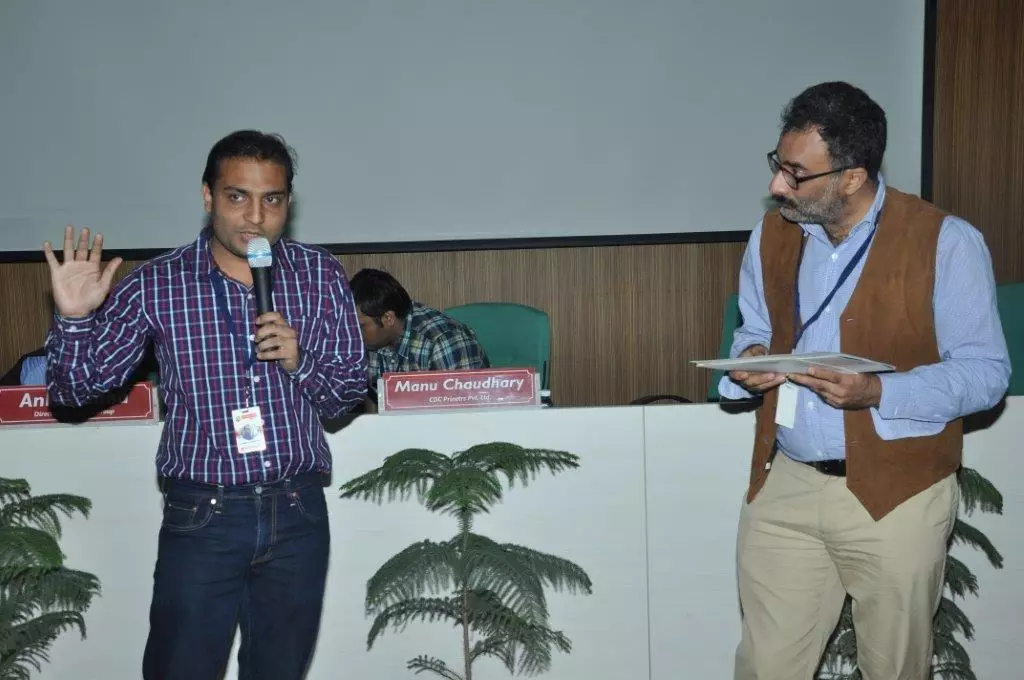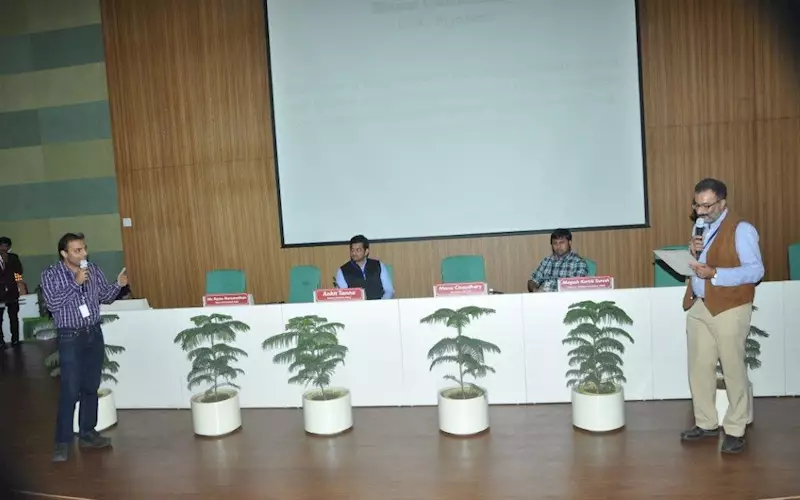Three print musketeers on the road to Hisar
We assume that our existing technology will last forever, but history makes fools of us. The question is not if a technology will change, but when.
02 Mar 2015 | By Ramu Ramanathan
 Two blacks equal to one black
Two blacks equal to one black He speaks about printing with two blacks. This unique separation into two blacks is completely operator, software, RIP, or any other proprietary software independent. The process is very simple and results in accurate, repeatable, and predictable colour reproduction. The black and white photographs look rich and the details are striking.
He speaks about printing with two blacks. This unique separation into two blacks is completely operator, software, RIP, or any other proprietary software independent. The process is very simple and results in accurate, repeatable, and predictable colour reproduction. The black and white photographs look rich and the details are striking.
Five generations of print
Printers are having to re-structure their DNA to meet the demands of the new consumer. So in addition to investing in Naph (Made in India) to cater to the publication market, Magesh Kartik of ST Reddiar in god's own country is eyeing the new compact flatbed cutting table from AGS. This low cost but clever kit allows printers to produce high quality, cost-effective output on demand when combined with its packaging drive.
As Magesh said, "The cutting table supports immediate finishing of packaging and prototypes, offering both creasing and cutting capabilities, and cutting of cushioning materials."
The fifth generation representative of the Reddiar family, is very amused because almost everyone he meets knows him as his father's son. His father Suresh Reddiar has been the president of AIFMP and a well known industry personality.
But Magesh is clearly a man on a mission. His ideas are generally about the future of print. ''
One, print business isn’t centered around print anymore. He believes on focussing on the end user. Magesh feels printers should go to where the audiences are.
The other catch phrase is: Data is the trump card. The more print invests in generating expert, curated data, the more we will trigger print engagement. Plus he feels with brands playing a key role, repeatability and quality standards are a must.
The other thing he mentions while chatting is the new print consumption culture which has been redefined from years to months to moments to micro-moments. It is multi-device and personalised. Therefore print has to work in order to deliver round the clock content basis; print needs to adapt to ensure delivery.
And finally, how diversifying revenue streams is a must now. Specialisation is no longer a luxury.
To achieve his dreams, he has a few aces up his sleeve. As they say on national TV, watch this space for more.
 A taste of good medicine
A taste of good medicine
Printmann, which has clocked Rs 70-crore turnover in FY 2013-14, has a history of diversification and bold investments. Only recently, Printmann invested in two G&K Vijuk’s GUK FA53 outsert lines, one in 2013 and the other late last year. Plus there is a unit in the heart of Mumbai in Lower Parel which is where the print journey began. All this is housed in the company’s three-storey plant in Navi Mumbai where the firm has a total of five folding machines and a fleet of presses which includes two Rotateks as well.
Ankit Tanna, who is the youngest in the Innova talks about how Printmann converts and inspects high quality labels for a highly demanding Indian pharmaceutical market.
Tanna explains how the crux of operation is bi-directional unwind/rewind, and 100% print face inspection equipped with 4096 pixel, grayscale camera capable of detecting defects to a minimum size of .0000465 square inches (0.03 square mm) at speeds up to 22.2f/pm (150 m/min).
Labels with static and dynamic 1D and 2D bar codes can be checked. He explains how the Flytec permits labels to be compared against pre-press created PDF files as well as taught to read the 'golden image' data.
He speaks about how the packaging is sealed so that any premature opening or manipulation of the packaging can be prevented. One of the purposes of the high pedigree HHS Baumer gluing system is to prevent falsified medicinal products from being repackaged in valid packaging.

With regard to processability, Tanna feels, there are no limits with glue application. In modern folding carton machines, in which this technology is standard, several glue points are applied on each box at a machine capacity of 120,000 folding cartons per hour.
He says, the purpose of gluing was originally limited to "sealing packaging. In terms of ensuring tamper resistance, Printmann turned gluing into a security feature. This meant, packaging must not be capable of being opened at gluing points without a manipulation being apparent.
For this Tanna and his team enabled that the gluing of the side seam and possibly the bottom (for an upright box) by a folding carton manufacturer.
No short cuts, for this pharma player.
Even as the three stories criss cross; we realise we have reached our destination in Hisar. A brief reference to the GPS; and we locate the Rs 40 crore palatial auditorium where the Romance Print is being hosted. Students from the Print Department recognise the three musketeers. And even as limbs are being stretched and fresh Haryanvi air is being inhaled; a stray news item grabs my eye.
The local newspaper says nearly 11,000 accidents occur annually in Jat-Land and around 4,000 people lose their lives per year and more than 16,000 persons get seriously injured.
Under the scheme launched by the CM of the state, the a safe road campaign has been initiated. The fund for this campaign would be utilised to impart traffic education to road-users, including children, by holding awareness campaigns, rallies, quiz, drawing competition and by publishing advertisement in newspapers, putting hoarding or boards and printing pamphlets and handbills.
In other words, more print!
Thus ends the story of three print musketeers and their four hour journey to Hisar.















 See All
See All